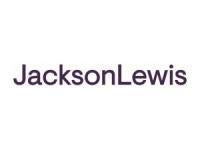Takeaways
- The United States continues to attract the largest share of international graduate students, particularly in STEM fields, but its dominance may be slipping.
- Other countries are expanding their post-study work options and streamlining their immigration pathways to compete for the world’s best and brightest.
- U.S. employers seeking to secure international talent should act early and explore retention strategies such as green card sponsorship and STEM OPT extensions.
The United States continues to be a magnet for international students, especially in science and engineering graduate programs, but its dominance is no longer a given. According to a new report from the Association of American Universities (AAU), although U.S. institutions remain top destinations for international doctoral students, particularly in critical STEM fields, the country’s global share of this group is shrinking as other countries invest aggressively in international talent acquisition and retention.
Numbers Are Still Strong, But Trending Down
According to the AAU report:
- As of 2022, 65% of international STEM doctorate recipients in the United States were still in the country 10 years later.
- The country’s share of globally mobile students, however, has dropped from 28% in 2000 to just 15% today.
- Canada, the UK, and Australia are streamlining their permanent residence pathways and marketing their post-study work options more effectively.
Why This Matters for Employers
The U.S. immigration system continues to provide valuable pathways for retaining international talent, including STEM OPT, H-1B visas, and employment-based green card sponsorship. However, the process for any of these can be both lengthy and uncertain. Delays in PERM labor certification and I-140 adjudication often discourage top-tier candidates from committing to long-term employment. Candidates are drawn by other countries that offer faster, more predictable options.
To stay competitive in the global talent market, U.S. employers should consider initiating the green card process earlier than they do now for high-skilled international employees, particularly those working under F-1 OPT or J-1 waiver status. Starting the sponsorship process during OPT or the first H-1B period ensures greater flexibility and security for both the employee and the organization. Employers should also take full advantage of the 36-month work authorization available under STEM OPT extensions and explore alternative pathways such as the National Interest Waiver and STEM-based EB-2 categories, which are increasingly viable for professionals in research and engineering. Staying up to date on visa bulletin trends and processing times is key to making informed and timely sponsorship decisions.
Resources:
- New Data Show U.S. Retains Significant Share of Foreign Science and Engineering Talent Upon Graduation | Association of American Universities (AAU)
- USCIS Policy Manual: STEM OPT and National Interest Waiver Updates




 />i
/>i

